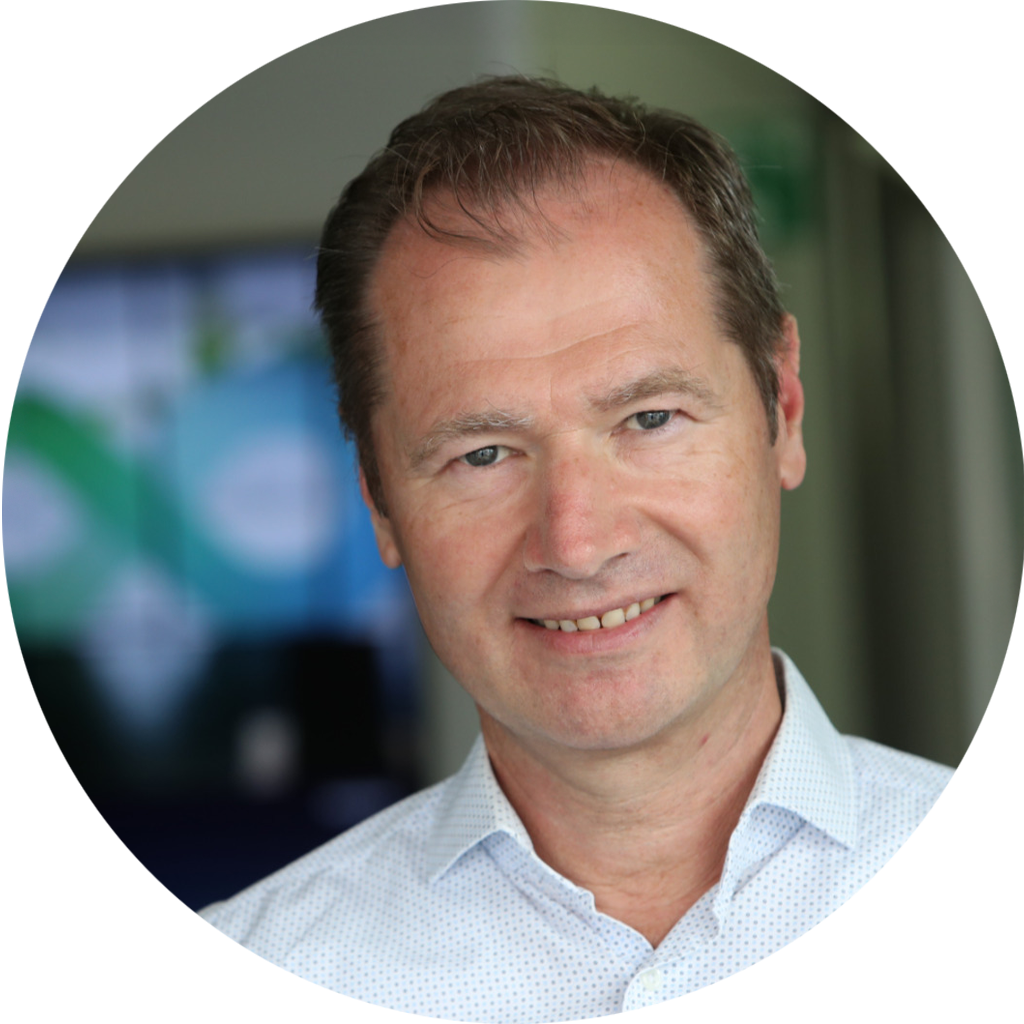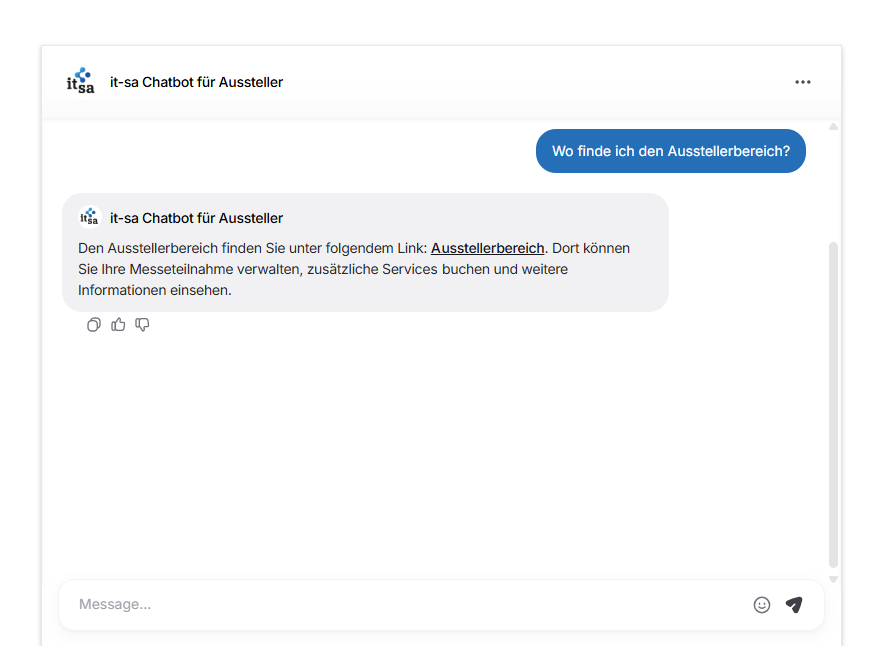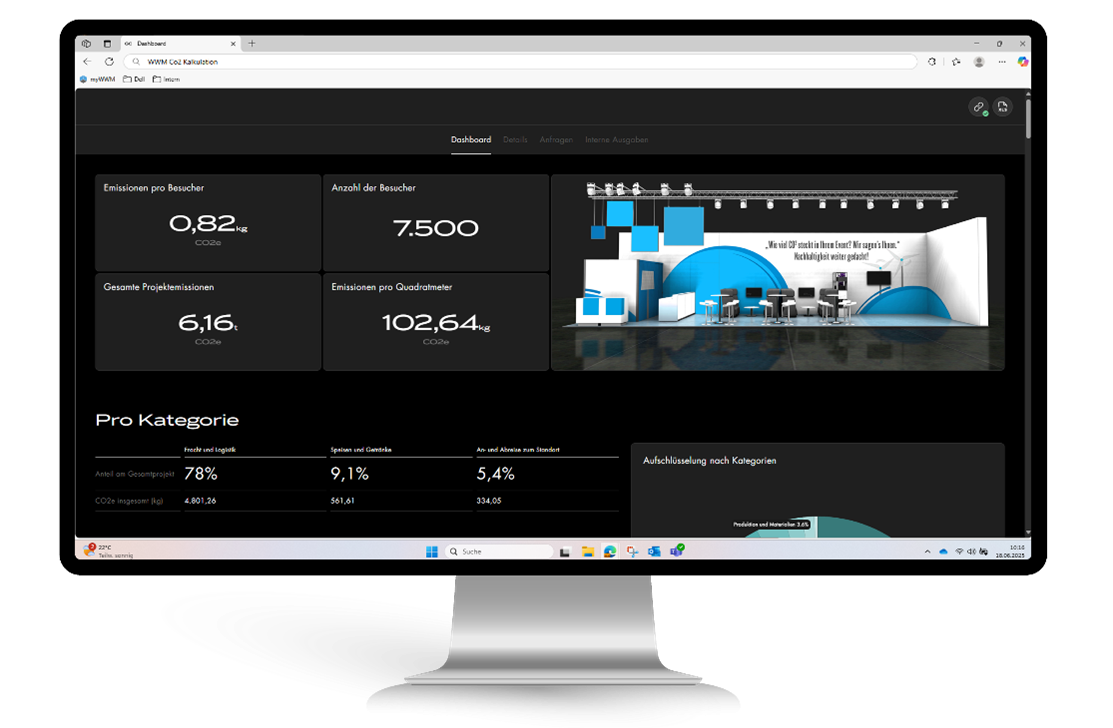The influence of megatrends on brand communication
Graphic: Adobe Stock, Nataliia, AI-generated
Graphics: Adobe Stock, Nataliia, KI-Generiert
All industries need to track and respond to trends to future-proof their business models—and live communication is no exception. Since its formats cut across industry, commerce, and services, spotting social megatrends early and implementing them with care is crucial.
We distinguish between numerous trends and a select few megatrends, with a particular focus on the four big Ds: decarbonization, deglobalization, demographic change, and digital transformation. Each exerts a profound, long-term influence on society at large, across industries and technologies—and, of course, on the trade fair industry.
Advertisement
New People: Megatrend "demographic change"
Trade fair audiences are shifting: a higher share of women, younger, more international, more tech-savvy, more digitally native—and more demanding. Their communication habits are well ahead of previous generations, which calls for a fundamental reset in audience communication. Two themes are pivotal: AI and connectivity. Connectivity means not only linking digital systems with each other and with people, but also placing renewed emphasis on human-to-human connection—enabling greater individualization and personalization.
In this environment, so‑called tried‑and‑true approaches are losing traction and relevance. Courage to innovate pays off. “Visitors should have the best experience with us and instantly recognize the story at the stand,” says Robert Sarcevic, Vice President Global Business Services at Siemens. Storytelling is a powerful method at every level of communication, shaping information into narratives that are easier to absorb and remember. Against this backdrop, it’s hard to understand why so many trade fair stands still amount to little more than a website blown up onto a wall—a staged shelf of goods.
Shifts in audience behavior—and the resulting demands on communication strategies—are creating significant challenges for suppliers. Consequently, trade fair strategists must evolve their mindsets and skill sets. As Mark Kessels, founder and CEO of Converve, puts it: “Anyone who creates meaningful, sustainable experiences for demanding audiences in today’s complex, multimedia environment must simultaneously act as a communication designer, digital expert, behavioral psychologist, content developer, and brand strategist—combining deep methodological expertise with an excellent grasp of technology.”
The 2025 trade fair trends also clearly show that the days of pure product presentations are over. The future belongs to emotional, interactive and sustainable trade fair presentations that inspire visitors and create long-term loyalty. Companies that embrace these trends will remain irreplaceable in an increasingly digitalised world. The trade fair stand can thus become the centrepiece of successful brand communication.
Gamification as a Booster for Participation
Humans are not only Homo sapiens—thinking beings—but also homo ludens—playful beings. Gamification can be applied at many touchpoints along the customer journey: before, during and after the trade fair. Pre-event digital experiences on the website are effective door openers. Visitors take part, collect points, solve puzzles, or secure vouchers to redeem later at the stand. Bite-sized games that take just a few minutes spark lively interaction. “For example, we developed a mini-game for a veterinary medicine manufacturer in which a tick repellent competes against a rival product on a digital course. Naturally, it’s obvious which one goes the furthest without being attacked,” says René Meures, Head of Marketing & Sales at stand builder WWM in Monschau.

In addition to entertainment, corporate games from Metapilots also offer the opportunity to interactively present products, services or company-specific information. Graphic: Screenshot Metapilots
Adapting familiar game mechanics offers strong potential to convey content in a likeable, engaging way while generating leads. The payoff: livelier stands, more opportunities for conversation, and greater recognisability.
Are trade fair stands getting smaller?
According to the AUMA Organiser Outlook 2024/25, around 56 percent of respondents are considering smaller stand spaces. This aligns with the broader economic climate, in which investments are being made more cautiously. At the same time, a growing emphasis on a triad of education, exhibition, and accompanying networking events at the venue is influencing stand sizes. As side events gain importance, they extend the reach and depth of a company’s trade fair presence beyond the stand itself.
Robert Sarcevic of Siemens confirms: “The trade fair stand is an important touchpoint in the customer journey, where many elements come together”—but it is only a culmination point. He adds: “From my point of view, a trade fair is not an exhibition; rather, an exhibition is part of a trade fair.”

Photo: privat
"In my view, a trade fair is not an exhibition; an exhibition is part of a trade fair."
Robert Sarcevic, Vice President Communication Services, Siemens AG (Global Business Services)
Growing audience fragmentation will spur the rise of new, highly specialized industry events alongside the major leading trade fairs. These formats will run on shorter cycles and, consequently, be smaller. AUMA’s latest surveys also show that rising costs are among the biggest challenges, with cost consciousness remaining a constant driver for both exhibitors and visitors. Booking windows for stands and visitor attendance decisions are shortening as well. The logical response is greater flexibility in offerings and planning—paired with faster turnaround times.
The role of artificial intelligence: the "digital transformation" megatrend
AI is opening new horizons and reshaping how we live and work. It is streamlining human labor as never before while automating tasks traditionally performed by roles such as interpreters and copywriters. Tools like ChatGPT can generate near‑professional copy; ElevenLabs mimics human voices with striking fidelity; Midjourney and Sora create photorealistic images and video; and platforms like Lovable enable non‑coders to build websites or apps in minutes.
After a brief input, the software can design and build a complete website—including a registration form—for a planned trade fair in about ten minutes. On screen, you can watch the “coding agents” racing through tasks at breakneck speed. With payment integration added, the organiser can start selling tickets online immediately. The AI can also generate an appropriate music track within minutes, tailored to the desired genre—and royalty-free (GEMA-free).
Research in fast motion
The co-founder of Google DeepMind, Demosthenes "Demis" Hassabis, was awarded the Nobel Prize in Chemistry in 2024 for developing an AI that decodes how proteins are folded. It used to take scientists around five years to decode a protein. This newly developed AI has decoded 200 million proteins within three days. With such capabilities, completely new drugs can be developed. This is just one of many examples of AI that is constantly improving itself and bringing about enormous acceleration in many areas.
Because AI operates far faster than humans, exhaustive oversight quickly becomes impractical—an obsession with total control has to give way to smart governance: clear guardrails, human‑in‑the‑loop checks, and robust monitoring. Rather than invoking an “AI IQ,” a better yardstick is task‑specific benchmarks, where state‑of‑the‑art systems already match or exceed human performance in many domains. Even so, AI remains fallible—and sometimes confidently wrong. In production‑grade deployments, however, models are fine‑tuned, constrained, and continuously evaluated to achieve high reliability and efficiency.
Despite justified scepticism, AI specialist Julian Yogeshwar puts it bluntly: “The biggest mistake small and medium‑sized enterprises can make right now is to wait. If you miss the revolutionary potential, you’ll be left behind sooner than you think, because the power of AI doubles every six months!”
AI in the application practice of exhibitors and visitors
In the trade fair industry, AI primarily enhances upfront research by enabling more precise audience segmentation and leveraging historical visitor data to design tailored communication for clearly defined target cohorts. The more tightly this cohort is defined, the more efficient and effective the outreach. Generative tools such as ChatGPT also streamline sourcing—whether for speakers, evening venues, or caterers: provide a clear brief, and the tool quickly returns shortlists with relevant contacts.

At it-sa, Europe's largest trade fair for IT security in Nuremberg, a chatbot supports exhibitors and visitors with quick answers and facilitates orientation. Screenshot: itsa365.de
AI-powered chatbots are increasingly embedded in event apps to handle frequently asked questions, provide real-time updates, and support attendees in multiple major languages—now a must for international audiences. Specialized matchmaking tools connect visitors and exhibitors based on preferences, roles, interests, and location, improving meeting quality and conversion. Emerging AI agents offer an end‑to‑end orchestration layer that can automate routine tasks across the event cycle. Meanwhile, widely used AI image and video tools have proven their value for creating logos, title treatments, and brochures quickly and cost‑effectively.
ChatGPT can also support programme planning—creating timetables with session titles, speakers, and room assignments. Generative text AI can then summarise all key event information into a single, concise email. AI also helps select the “right” trade fair from a crowded marketplace by analysing large datasets from multiple sources to identify formats most likely to deliver strong ROI. It further aids in defining clear objectives by forecasting potential outcomes based on historical performance and current market conditions.
Lead Management: The Number-One Goal of Every Trade Fair Presence
AI streamlines lead capture, qualification, and prioritisation. During the show, AI-powered tools analyse conversations, scans, and interactions to surface relevant contacts and automatically score and route them. Post-event, AI triggers timely follow-ups with personalised content and offers, ensuring no valuable contact is lost and maximising ROI. Instead of mass, scattergun outreach, digital profiling enables precise segmentation and differentiated nurture tracks—so each audience segment (or account) receives tailored messaging, timing, and next best actions.
If you’re aiming to launch a lead‑capture (LC) campaign within 48 hours, live communication has to be scalable. When a campaign proves efficient on social media, budgets are quickly increased there—rather than allocated to live formats. Traditionally, events haven’t scaled fast enough because live communication is treated as a one‑off project. Turn it into a repeatable process, supported by the right software and templates, and scaling becomes straightforward—so ten events or trade fair appearances can rapidly become a hundred.
Success monitoring and ROI analysis with artificial intelligence
AI enhances post-event analysis by evaluating key metrics such as lead quality, visitor interactions, and revenue potential. This brings greater rigour to ROI calculation and delivers clear insights to improve future performance.
Measurability at the centre of digital transformation
Is the stand attractive? Does it stand out? Were the aisles full? That’s no longer enough. Success must be measured rigorously. Trade fairs are about measurement. Start simple: define objectives, deliver the show, analyse goal attainment, and then set measures for optimisation. Data‑driven formats with built‑in intelligence are on the rise. Organisers are increasingly asking how they can create a unique attendee experience from their data. But which key figures should you actually track?

"Stand building today is driven more by keyboards than saws."
Dr Christian Coppeneur-Gülz, Managing Director WWM.
It’s widely recognised that topline visitor numbers are a poor proxy for an individual exhibitor’s success. What really matters is: how many of the right people came to the stand? Did the audience profile align with our objectives? And what was the commercial impact in terms of brand awareness, image, pipeline and sales?
Ten to fifteen years ago, many marketers participated largely for signalling reasons—to avoid giving customers or competitors the impression the company was struggling. That mindset is fundamentally misguided, as is the lingering scepticism about whether trade fairs are still the right tool in a digital age.
Just as physical mail has regained value in a digital world, the multi-sensory impact of in-person encounters has become more important than ever. Amid increasingly anonymised customer contact through digital tools, leaner sales teams, and the boom in videoconferencing, trade fairs have assumed a fundamental role in maintaining customer proximity and filling the resulting vacuum. AUMA surveys show that, in exhibitors’ marketing budgets, only their own website ranks ahead of trade fair participation—and by a margin of just eight percentage points.
Back to the metrics: what matters is the visitor who meaningfully engages with your product at the stand. Treating a stack of business cards as “leads” is archaic—they’re not a proxy for brand awareness or engagement.
A perennial favourite with new perspectives: "Megatrend sustainability"
By 2029, Germany’s trade fair venues plan to invest more than €770 million to modernise and expand their infrastructure, with a particular focus on improving digital standards and achieving sustainability targets. This strongly signals that sustainability is a true megatrend—and that the German events industry intends to lead by example. Visitors are keeping pace: according to AUMA’s 2024 study “The Added Value of Trade Fair Visits: How to Avoid Single Trips,” more than half of nearly 3,000 respondents (56.4%) said they consider ecological factors when planning trade fair visits and travel.
The economic case is clear: compared with multiple separate business trips, a trade fair performs strongly. AUMA’s study highlights an often-overlooked benefit—one trade fair visit can replace numerous individual trips by consolidating many meetings in a single location.
Photo: Koelnmesse GmbH, Alita Holzhauer
Photo: Koelnmesse GmbH, Alita Holzhauer
The ISO 20121:2024 standard for sustainable event management has become widely adopted across the industry, especially following its 2024 revision. It now serves as a key framework for the systematic management of sustainable events, helping ensure efforts go beyond greenwashing and lip service and translate into actions that deliver measurable results. As Peter Drucker famously noted: “What gets measured gets managed.”
If you’re serious about sustainability, you have to measure and manage the CO2 emissions associated with your trade fair presence. Mobility typically accounts for the largest share. A shift in travel habits is already helping: choosing rail over air, offsetting unavoidable flights, and using public transport at the venue can all reduce the footprint. The NGO atmosfair offers additional practical guidance, from organising carpools to lower-impact catering.
Accommodation choices matter, too. A wide range of eco-certified hotels can further shrink emissions—for example, properties carrying the GreenSign label, Certified Green Hotels, or the Europe-wide Select Green Hotels standard.
For exhibitors, stand construction is central. Since June 2025, an industry-wide collaboration called "Better Stands" has given planners a straightforward pathway to adopt reusable exhibition stands. Hosted under the Net Zero Carbon Events (NZCE) initiative and supported by the International Federation of Exhibition & Event Services (IFES), the framework can be adopted by organisers, service providers, venues, and associations worldwide. Its goal is to accelerate the shift from single-use to reusable stand structures. It also sets out standardised criteria for assessing the reusability and recyclability of stand elements.
The goal is to unlock cost savings and greater efficiency through sustainable design. A multi‑stage evaluation and recognition scheme acknowledges the commitment of exhibitors and stand builders. Classification can be completed in advance via a verification process or on site by trained experts during the event. To streamline sustainability‑orientated stand planning, Monschau-based trade fair specialist WWM has integrated a dedicated CO2 Calculator module into its my WWM software, fully automating the required workflow.

Graphic: WWM GmbH & Co. KG
As part of ISO 20121 certification, the production-related CO2 value for each item was determined in line with NZCE guidelines. To reduce the CO2 associated with trade fairs, WWM advises customers to use rental materials. The rule of thumb is simple: if a rental component is used 50 times, the per-event share of its manufacturing emissions is just one‑fiftieth of the original footprint.
Within WWM’s closed software ecosystem, these values are known, so the CO2 footprint of an exhibition stand can be calculated in real time—already in the planning phase. If anything changes during realisation, the system records it and updates the CO2 value instantly.
The correlation between measurability and sustainability
Sustainability rests on three pillars—environmental, economic, and social—so simply reducing a trade fair’s CO2e isn’t enough; taken to the extreme, that logic would suggest cancelling the event altogether. The real goal is to optimise both ecological impact and economic performance: to find the sweet spot where trade fair effectiveness is maximised while resource use (CO2e) is minimised. For this purpose, the eTIM metric was developed in Monschau. In the my WWM platform, TIM (Total Interaction Minutes) captured via Event‑Metrics is combined with CO2e from the CO2‑Calculator to provide a single, decision-ready indicator.
More precisely: emissions are divided by Total Interaction Minutes (TIM) to yield CO2e per minute of interaction with the target audience. This KPI enables like-for-like comparisons across live communication formats and supports a genuinely sustainable trade fair strategy—ecological, economic, and social. Two megatrends converge here: measurability driven by digitalisation and AI, and sustainability. The decisive factor is combining ecology and economy; only when efficiency, experience, and sustainability work in concert will trade fair communication be fit for the future.
Hans Jürgen Heinrich